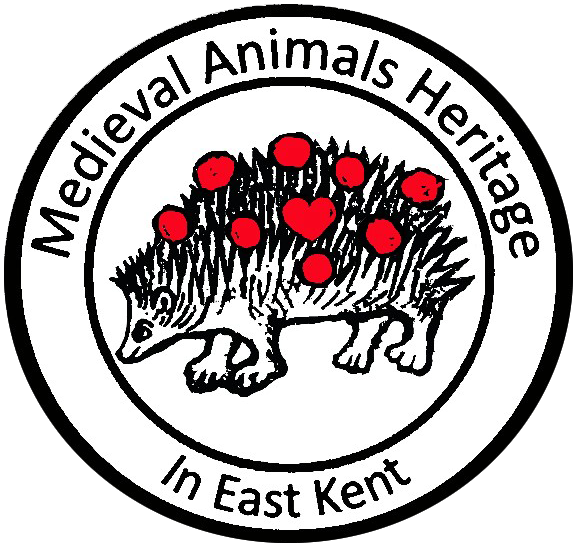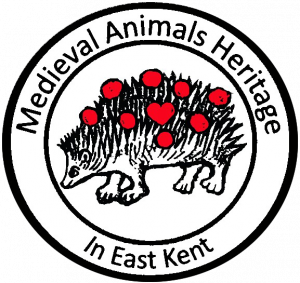During my visit with the Medieval Animals project to the fantastic Powell-Cotton museum I witnessed displays that boasted the breadth and excitement of the animal kingdom. When searching the photographs taken that day for the topic of this blog I was no doubt spoiled for choice. However amidst the dynamic displays of feasting lions, cliff-clambering goats, and brilliantly coloured birds it was the contents of an unassuming chest of drawers that captured my imagination. Within were carefully collected insects of every variation, from the recognisable forms of butterflies and grasshoppers to truly alien creatures disguising themselves as twigs and thorns.
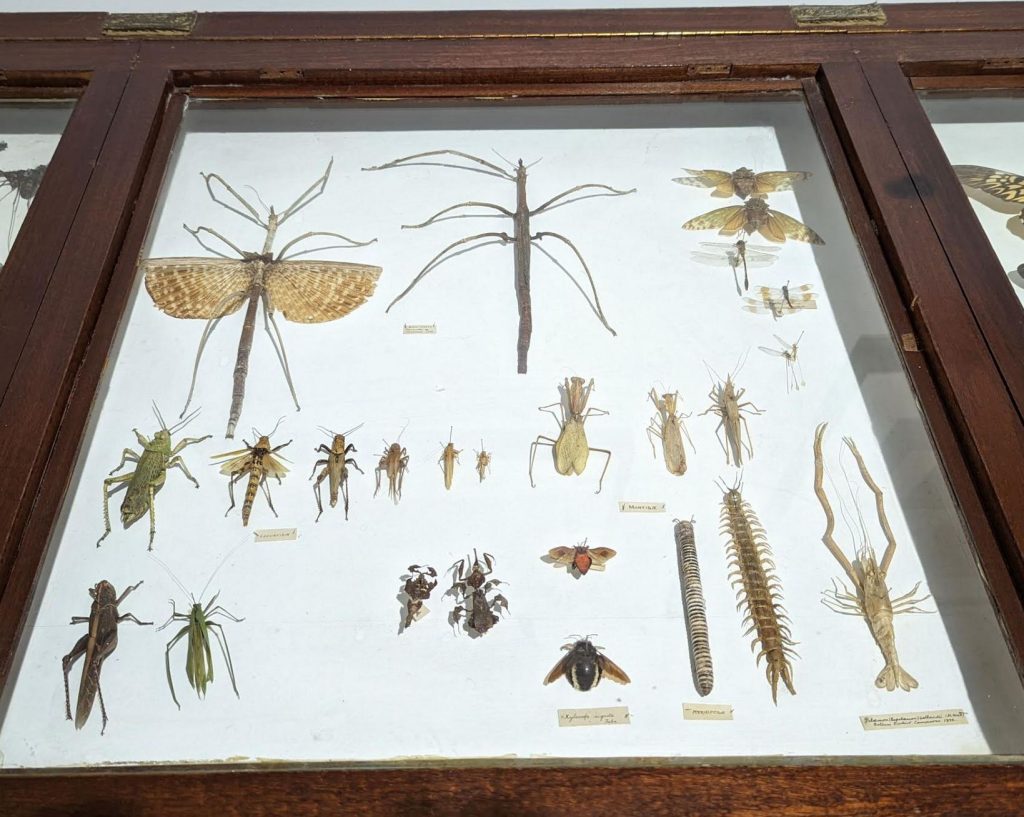
Figure 1
Surely then, with such an abundance of unique and characterful insect life the creators of medieval bestiaries had plenty to work with when utilising these creatures to inspire emotion and contemplation with their audiences. Whilst, much like their display-case bound descendants, the insects of medieval art and literature are rarely given center stage, when they do emerge even the humblest insect provides its teachings in fittingly weird and wonderful ways.
In the eleventh book of his ‘Natural History’ the Roman author and naturalist Pliny the Elder speaks highly of insect-kind. He argues that whilst admiration of the natural world is most commonly attracted by the powerful and impressive forms of tigers, elephants, and bulls “nature is nowhere to be seen to greater perfection than in the smallest of her works”. Pliny further comments on this concept of natural perfection by comparing insect life with larger animals which share the same faculties for sense and motion, but with which nature had far more room to work. He continues by imploring his audience to set aside any personal revulsion for this particular class of creature, stating that when the study of nature is concerned “there are none of her works that are unworthy of consideration”. One such insect that features in the studies of Pliny the Elder is the humble ant, praised for both its mundane qualities and for its more fantastical variations. Demonstrating a clear attentiveness to the behaviours of ants Pliny comments on their strength (namely their ability to carry great loads in proportion to their size) as well as their diligence and group dynamics, referencing their habit of marching in a line, and going so far as to denote ants as possessing a form of government. Drawing from the work of the earlier Greek writer Herodotus another form of ant is mentioned in the ‘Natural History’, one whose bizarre characteristics would go on to capture the attention of medieval writers. These ants, cited as inhabiting India, were said to be the size of wolves. Stranger still than their incredible size was the ants’ apparent practice of harvesting and storing gold from deep within the earth. Pliny describes locals waiting for the giant ants to abandon their stores in the heat of the summer before entering to pilfer the gold for themselves, often being chased away on their camels by the vengeful insects.
Both the respectable industriousness of the ant, and the curious stories of their giant, gold-mining cousins continued in animal literature into the middle ages. This well-established imagery was then combined with the all-important medieval interest in religious interpretation and allegorical meaning. The 13th century writer Thomas of Cantimpré invokes the teachings of Solomon, commanding his readership to observe and imitate the nature of ants. Those who are lazy are encouraged to learn wisdom from the ants, who Thomas describes as “provident and concerned” about their affairs. He continues depicting the strength and diligence of the ant as praiseworthy, and via them draws attention to the idea that through hard work and perseverance any goal becomes achievable. Even the remarkable gold-mining ants are given a Christian context, their presence around sites rich in gold being attributed to the work of God as a method for curtailing the greed of mankind.
Artistic depictions of ants from medieval sources often focus on their mundane toils. They are most commonly represented as they are in figure 2: in the process of harvesting, transporting, drying, and storing their grain. This image, produced in the late 12th century, provides the additional detail of the ants walking in orderly formation. The green structure on the right hand side of the image likely depicts their carefully constructed home. For the overwhelmingly agrarian society of medieval Europe depictions such as this would have provided an immediate relatability to an otherwise inhuman creature.
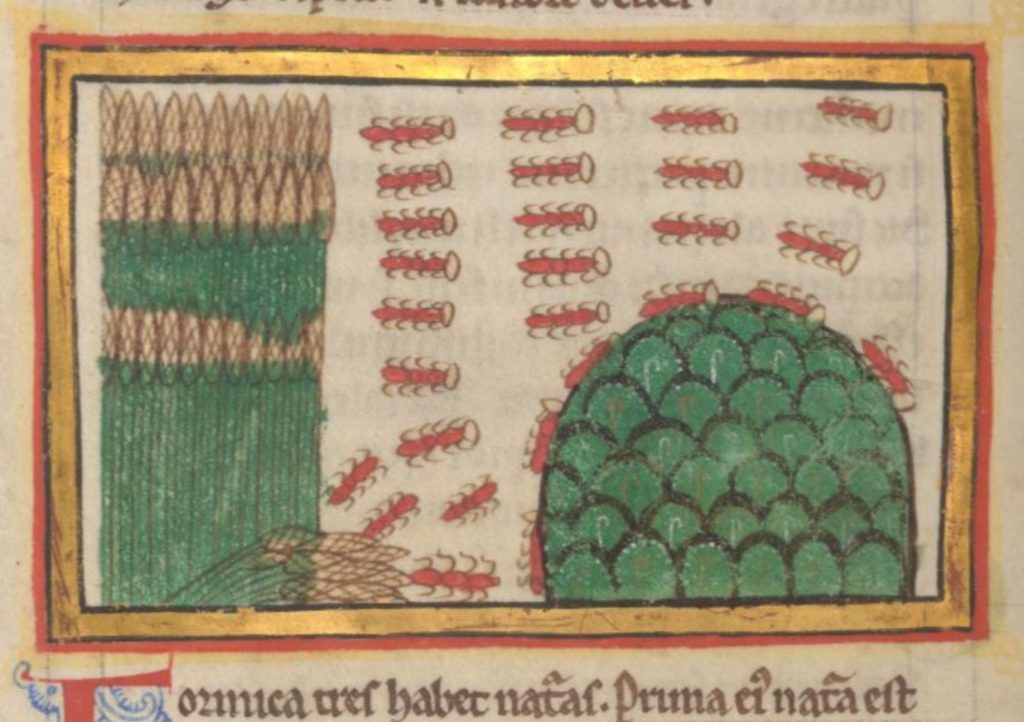
Figure 2
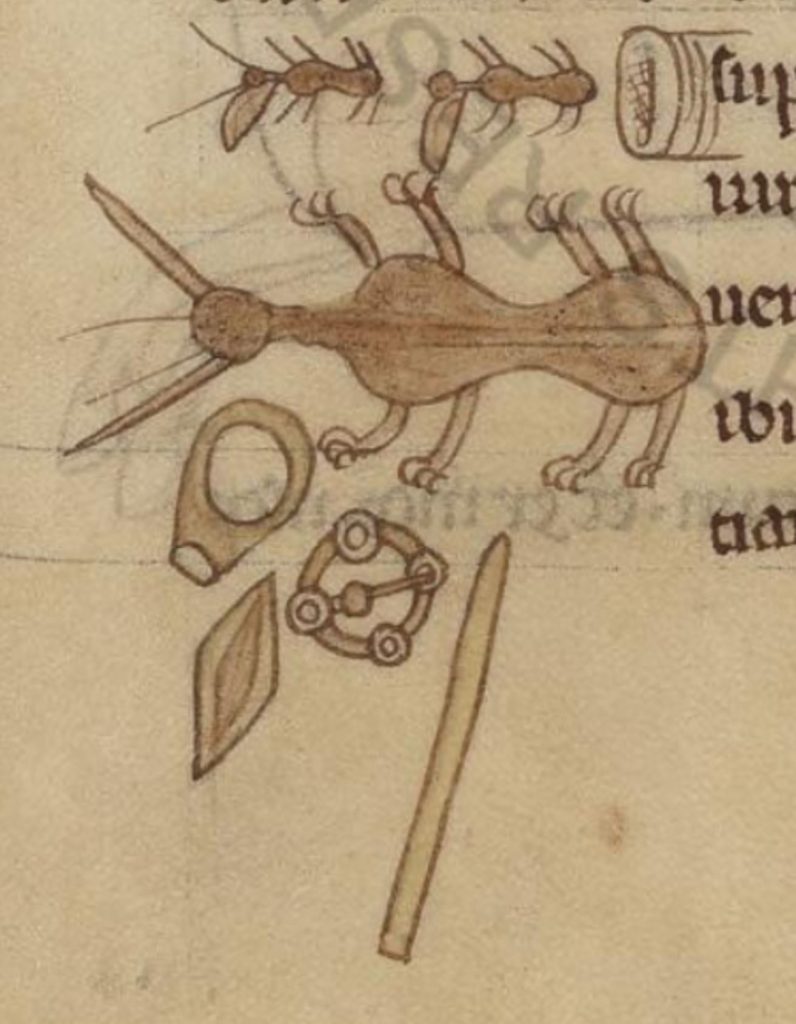
Figure 3
This image from the 13th century shows a pair of ants beside the entrance to their nest, carrying grains nearly as large as themselves. Whilst not the most detailed illustrations of ants found in medieval bestiary art this duo are instantly recognisable in their form. The space below them is dominated by an image of their larger Indian relative. This excellent image is complete with claws for both excavating riches and mauling thieves, and is charmingly depicted with several items of worked gold, including a circular brooch and a stylus. The depiction of this ant’s gold as recognisable valuables is an ingenious visual signifier from an artist without access to the gold leaf found in the following image.
This final depiction is focused solely on the fantastical and dangerous ants of Herodotus’s accounts. Another creation from the 13th century, this image accompanied the work of Thomas of Cantimpré. This ant is literally surrounded by gold, both in the border of the image, and in smaller pieces around it. Similarly sized to the unfortunate victim pinned beneath its claws and mandibles, this monstrous ant serves as a visual representation for the price of greed.
Likely due to their nearly universal provenance, ants are a more common feature in medieval art and literature than other insects. Only the bees, who match the ants’ industriousness and exceed their usefulness, are given such close attention in works otherwise dedicated to creatures far grander than themselves. The persistent appeal of the ant may also in part stem from its versatility. They are at once capable of highlighting the values of a humble, hardworking, and diligent attitude, whilst equally able to thrill and terrify with tales of dangerous monsters and stolen gold.
Post by Robert Newby, a Medieval and Early Modern Studies graduate with a love for the creatures found within medieval bestiaries.
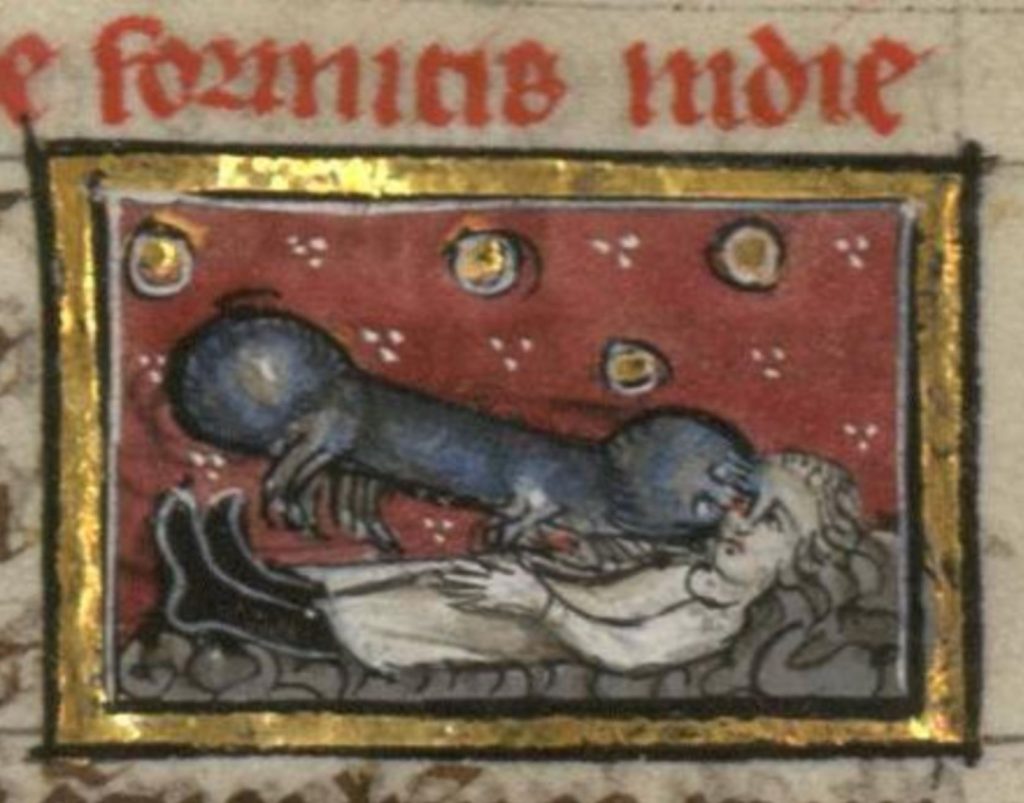
Figure 4
